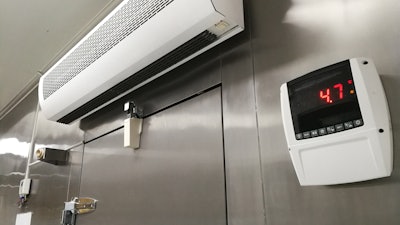
Illness, vacation days, increased production requirements and other stressors often mean that the holidays rarely bring “good tidings” to restaurants, grocers, and food manufacturers. Throw in food safety difficulties and a national labor shortage and suddenly it begins to feel like the Grinch stole Christmas. To cope with this lack of labor, many businesses will likely be forced to hire temporary/contract labor or ask full-time employees to work overtime and take on additional responsibilities. While necessary, overworked and tired staff members or inexperienced contract employees could cause more problems than they solve. In particular, failing to notice malfunctioning equipment, mismanaging inventory or failing to observe important food safety standards could lead to significant revenue losses and reputational damage. To regain some peace of mind, however, owners may want to consider how technology could help prevent these problems from happening in the first place.
How Tech Helps with Equipment Monitoring
Consider this: On average, businesses with refrigerators or cold rooms, experience a failure at least twice a year. With typical refrigeration inventory averaging more than $10,000, these failures can result in significant food waste and lost revenue. Most businesses rely on employees to monitor equipment and alert managers if there is an issue. But temporary employees or overworked staff may fail to do manual temperature checks or may miss important warning signs. To help prevent this from happening, businesses can install sensors to continuously monitor their equipment. If a door is left open, a power outage is detected or a compressor fails, the sensor will note that the temperature of the cooler is no longer within the desired range and will immediately notify designated contacts that the equipment needs to be checked. These alerts can be sent via push notifications, text messages, emails or even via the POS.
Installing this type of technology comes with a host of additional benefits. For example, these sensors can be programmed to check temperatures at regularly scheduled intervals and to create digital records which can then be used to create customized, on-demand reports for inspectors and other important stakeholders. They can also help business owners save on energy costs, as cooler doors no longer need to be opened just to check the temperature. And as accountability becomes ever more important within the food industry, these sensors can provide full traceability on food temperature storage history.
How Tech Helps with Tracking Inventory
On-demand access to accurate inventory data is crucial for operating a business successfully. However, many businesses are often working with short lead times and are relying on manual processes that can hinder managers and owners from accessing this type of data. Throw in inexperienced contract employees and you could have a recipe for disaster. This becomes especially important when recalls or government compliance is mandated within 24 hours. But deploying automated solutions can help ensure affected products are found and discarded appropriately.
Using RFID technology, an inbound pallet or carton can be quickly scanned wirelessly (with no line of sight needed). This technology can identify hundreds of tagged products inside all of the boxes on every pallet without a single box needing to be opened. This allows businesses to know immediately if the shipment is accurate and any expected versus actuals" can be addressed immediately. Without RFID technology, manual item level verification of inbound deliveries is time-consuming, labor intensive, and prone to error.
This technology can also be used to see what inventory is already stored on premise at the item level and can reduce the labor time and costs associated with taking manual daily inventory checks. Plus, RFID tagging can eliminate the need to manually check expiration dates at the item level. Instead, with an RFID reader, employees can scan 700 to 1,000 items per second to quickly identify which items must be immediately sold, used, or discarded. This technology can also be used to prevent wrong stock or overstock from happening, and it can ensure that staff members accurately remove and destroy recalled products. When it's time to move the product on to the next destination, RFID solutions can ensure that all products have been verified and that the shipments are accurate down to the item level. This level of visibility allows businesses to resolve delivery and shipment disputes quickly and easily.
Food Safety Education
Another area where temporary employees could potentially do more harm than good is when it comes to following food safety standards. Whether a business is operating under HAACP or has its own stringent standards in place, inexperienced labor can make mistakes that could disrupt operations, cause revenue losses and even damage a good reputation. However, there are many important ways that technology can help. For example, digital checklists can replace unreliable paper lists. Using a cloud-based, digital checklist application increases the accuracy of task recording, gives greater oversight to employee behavior and helps standardize tasks by providing instructions and materials when a task is in progress. Plus, businesses can collect evidence of completed tasks via photos, videos, text messages or multiple-choice questions.
Businesses can go beyond digital checklists and offer employees a mobile app that incorporates artificial intelligence which can automatically recognize food items. This technology allows staff members to scan items, log photos, log temperatures, record the employee’s name and record the current date and time all via a single tap. By automating the process, error-prone manual steps are removed. Additionally, this use of technology helps to eliminate fraudulent logs and cheating and eliminates the need for significant training of employees.
Adam Anderson is vice president, food at Avery Dennison Identification Solutions.






















